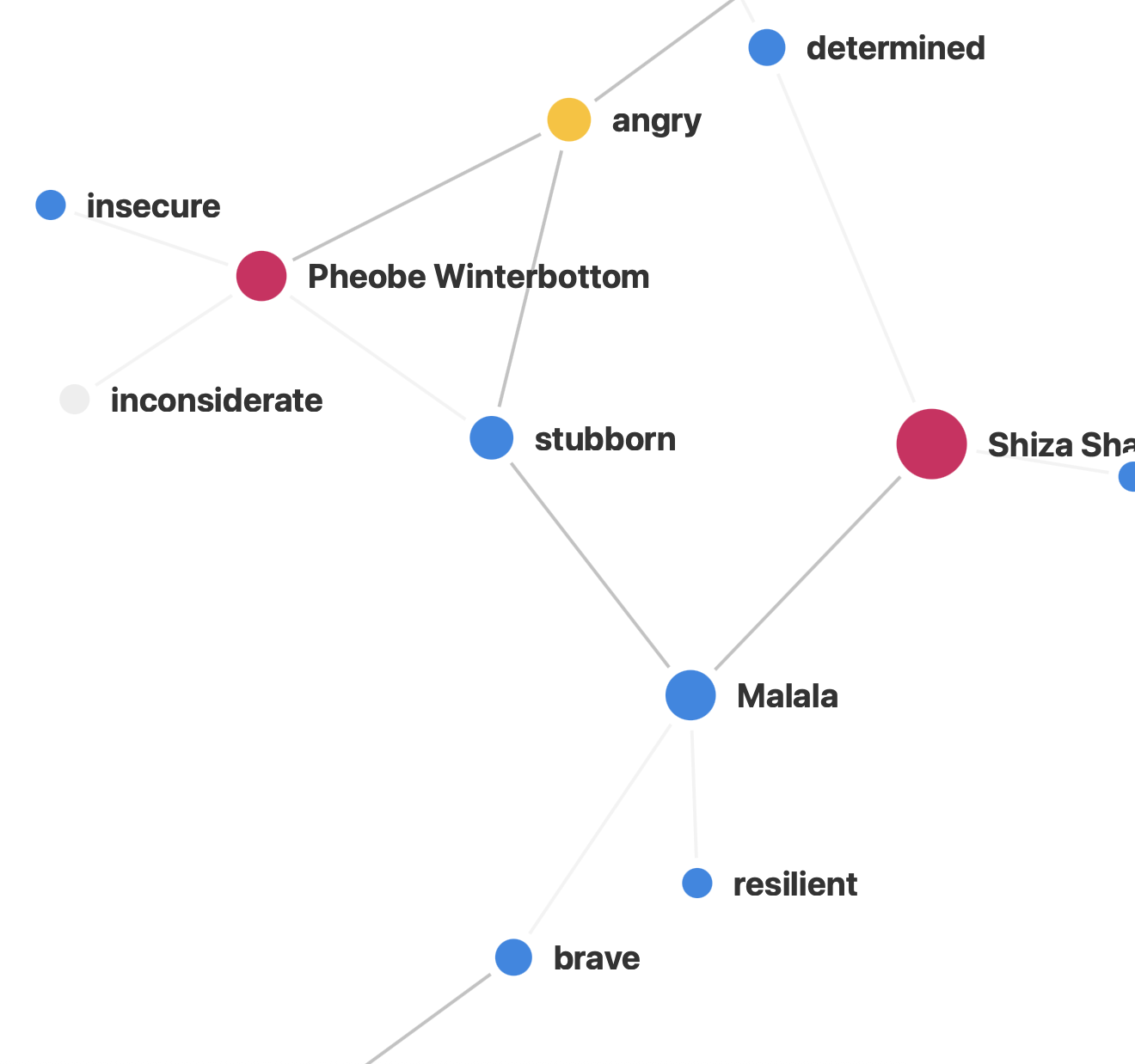
Should I choose this template?
Do you have a source where you want students to make deeper connections between themselves and a character or characters, or between characters in texts? The “Student Connections to Character Traits” network template provides the opportunity to make text-to-self and text-to-text connections in the following ways:
- make connections between themselves and characters from a novel, short story, or other literary work, specifically focusing on character traits.
- make connections across literary works.
Teachers who have used this type of network have found it successful for helping students to learn about character traits and make connections between literary characters, themselves, and the people around them.
When should I use this template?
When I want students to explore thematic connections between characters from one or more stories and relate them to real-world examples and personal experiences.
What sources work best?
Sources with characters displaying many different character traits–both positive and negative.
This activity is especially helpful for integrating several different readings. Used across several sources, the network can help remind students of previous characters they encountered months or weeks ago.
How should I use this template?
Network Details: What should my students and I be tracking?
For any network, students will track nodes (things) and edges (relationships between things), each of which will also have “attributes” (which include mandatory info like citations and optional info like extra notes).
Nodes (things being connected)
In this network, the nodes represent characters, character traits, emotions that the characters have, and (optionally) when students experience the same trait or emotion.
- Character: A character from a fictional source. For example, when reading the book The Book Thief, a character node might be Liesel (the fictional main character of the book) or Adolf Hitler.
- Trait: A descriptive word or short phrase that characterizes a long-term behavioral, emotional or other trait. For example, Liesel in The Book Thief is “defensive”. Students might also include notes that further explain the Trait. For example, Liesel is defensive because she was orphaned as a child and has a hard time trusting other people as a result.
- Emotion: A descriptive word or short phrase that expresses a temporary feeling that happens at a specific moment in the fictional source (i.e. an emotion is less long-term than a trait). For example, early The Book Thief, a character named Rudy shows Liesel compassion and she experiences a brief moment of trust.
- Student Experience: (optional) A short description of a moment in which a student had an experience that aligns with something in the fictional source. For example, a student who has been treated with compassion by a friend might create a “friend treated me compassionately” node, just as Rudy did to Liesel in The Book Thief.
Edges (connection types)
In this network, the edges connect characters or student experiences to traits and emotions that describe the characters or the experience the student had.
- is or feels: You would use “is or feels” to connect a node (likely a character or student experience) to an emotion or trait describing the character or experience. For example, there might be an edge showing “Liesel” - “is or feels” - “defensive” if the network is about character traits in The Book Thief.
What’s the investment in time and effort for this network?
Time: two class periods. One to get students used to the network as they identify and enter allusions and their sources. The second class period provides time to revise/add additional allusions and discuss the patterns students see in the allusions they entered.
Teacher support: Teachers will need to
- understand the basics of Net.Create (node and edge entry). (See this basic-data-entry video!)[https://netcreate.org]
- how to use one network filter (the “Ego” filter). (See this Ego-filter video!)[https://netcreate.org]
What learning goals does this template support?
Disciplinary goals
- CCSS.ELA-Literacy.RL.8.3: “Analyze how particular lines of dialogue or incidents in a story or drama propel the action, reveal aspects of a character, or provoke a decision.”
- CCSS.ELA-Literacy.RL.8.1: Cite the textual evidence that most strongly supports an analysis of what the text says explicitly as well as inferences drawn from the text.
What data literacy outcomes does this template support?
- Data is relational, and hierarchical. Students will cite the textual evidence that most strongly supports an analysis of what the text says explicitly as well as inferences drawn from the text, including identifying internal conflicts in the data collected from different kinds of historical sources.
This is also a good opportunity to explore:
- Data is interpreted, and we can even create it. Students will choose specific character traits and quotes from primary sources and enter them into a network, allowing them to explore their and their peer’s interpretation of historical figures’ traits in the context of both the original narrative and the data their peers entered. Creating the network themselves can help them appreciate that all visualizations are created by someone with ideas, interests, and biases.
- Data can be messy. As we create our data, we may disagree, which impacts interpretation. We need to figure out how to resolve and interpret that.
- Data is not always static. We are changing this data as we discuss our interpretations and revise them.
Resources for classroom use
Teacher Resources
- Classroom management recommendations
- Network-analysis learning Resources
- Simple Net.Create documentation
- Videos of new node/edge, table sorting, filters, etc.
- 5-moves-to-make video
- 1-pager lesson plan
- “Good questions to ask” guide for teachers
- What network-data moves (viz, tables, filters) to use as network gets big
- examples of previously taught lessons
- LINK HERE KYLE Alice Character Traits example lesson plan; MPB slides; Student Handout -AN Lesson Plan (still draft-y)
- Slides from NG
Student Handouts
- “Good questions to ask” guide for teachers

More about this item
Dublin Core
